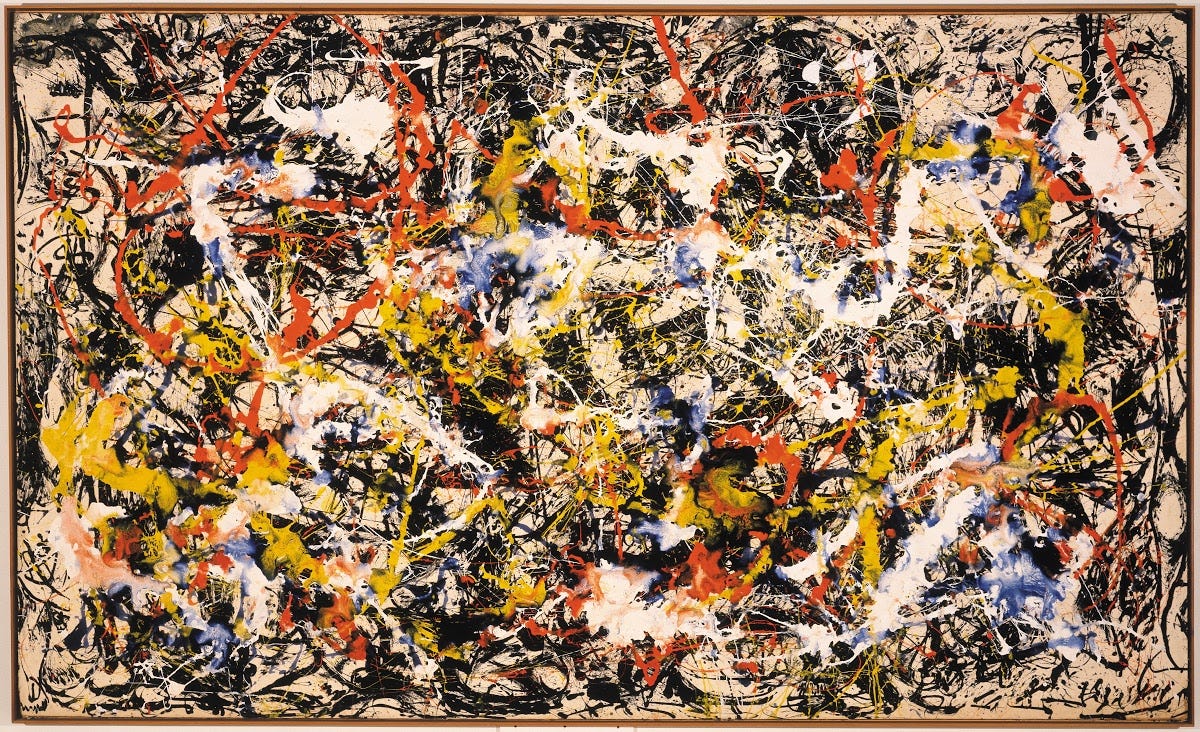Take any beautiful work of art that is imagined to be a harbinger of the future. Vary that work of art to the nth degree of technological sophistication. The artwork still rests in complete openness of empty space. Regardless of our protestation or desire to bestow a different meaning on it, this emptiness of the ‘work of art’ will remain the case. The future of the world depends on that openness, not the artistic example.

When we look at such a painting, a great deal depends on who we are and what we are open to in any particular moment. Insofar as we are all made of the same openness and emptiness, one might say we all see the same painting and it is made of the same emptiness. If it is some kind of (non-negative) emptiness we see in the painting, this can be recognized even in moments of ignorance or of non-looking, for example when we are not looking at the painting at all. Even if we look at the painting in a tired or insensible state, we still tacitly acknowledge there (regardless of how we self-cognize our way towards it) the emptiness of any painting on a canvas.
The emptiness we mean is partly the simple fact that the painting, however great, is not the future of the world. It may be the harbinger of a technological (or aesthetic) future, were such a future to be assured in this world system. But the artwork is not emptiness itself as a fact. Knowing how great the painting is lives easily alongside knowing straightaway that such a painting is empty, that great art has always been the height of specific emptiness. We see the masterful ‘convergence’ of signs, colors, splashes and stripes, and we also vary the artwork techno-aesthetically in any given future (for example twenty-dimensional Gestells and exponentially singular coded-heavens) and we have a sense of beauty, and at the same time we can acknowledge that what are we are seeing is shared emptiness. A convergence of empty data that also looks like it actually is the thing itself (emptiness) but is not.
Said again, part of what we see here (whether we see that we see it or not) is that although paintings can be harbingers of the future, they are not and cannot be the future of the world. Art may be prophetic and, once we are in the place of emptiness, expressive of the same emptiness that really concerns us, enfolding it as part of the vision, but great artworks are not the emptiness itself as blankly futural, they are not the great artistic emptiness (a very fine art, after all) of emptiness as such.
When we contemplate the micro divergent iterative variability of artistic essence, form and content, we contemplate a limitless set of corrections even as far as technologies the conventional brain/mind complex cannot yet imagine. At the same time, the only thing that really cannot be imagined is an artistic object that exists outside of the continuum of the great mind of bliss seeing emptiness. What we get to see instead, crucially, is that allowing artistic codes and activities to be viewed in any other way is working with superfluity. The personal or collective luxury to simply repeat with variations prohibits the chance to fall through to a featureless nature.
Seeing in this way appears severe but turns out not to be. If anything is missing from such observations it is a simple confidence in intuition, the absolute knowing that a work of art cannot be the future of the world. Convergence appears to be an ‘example’ and the painting typifies the colorful display that can itself distract us from the greater work of art and cultivation called emptiness. Technological advance (artwork becomes changeful Gestell) may change and exchange into emptiness, but emptiness is, as if were, the upper limit. No sense of criticizing the artwork is implied, just pointing out that it is not the future of the world.



Pollock is on my team too b***h
Him and Klee ride w me